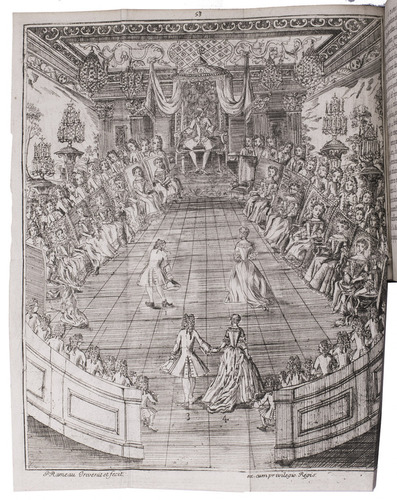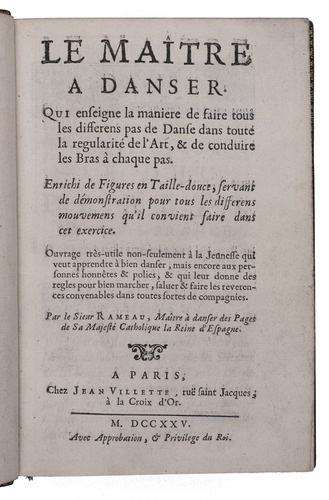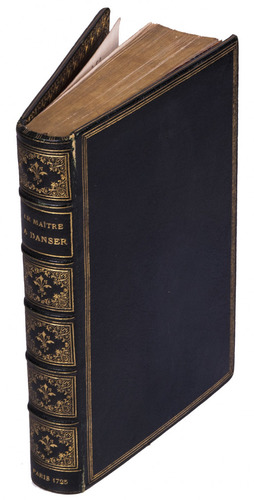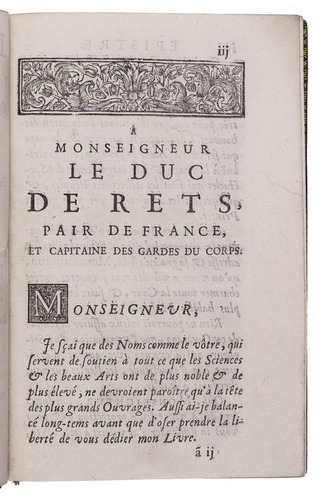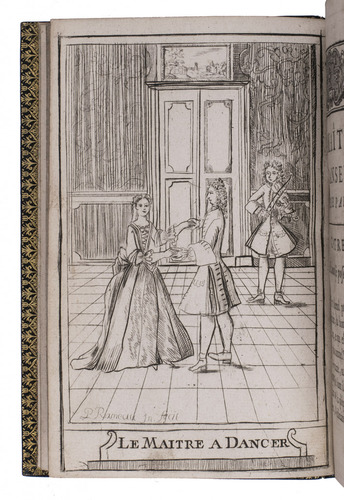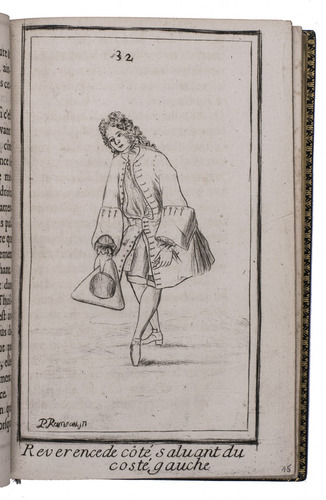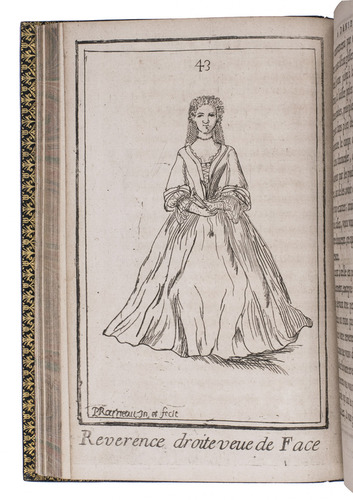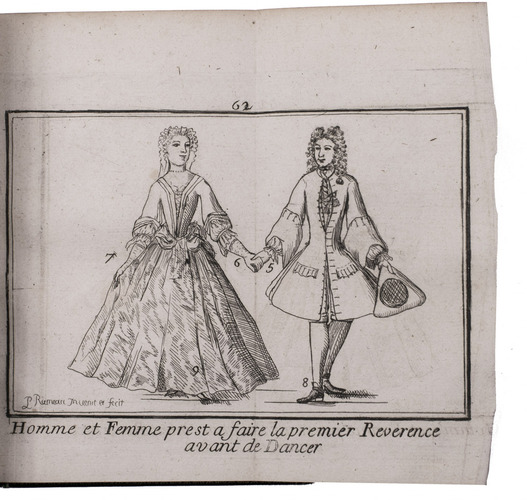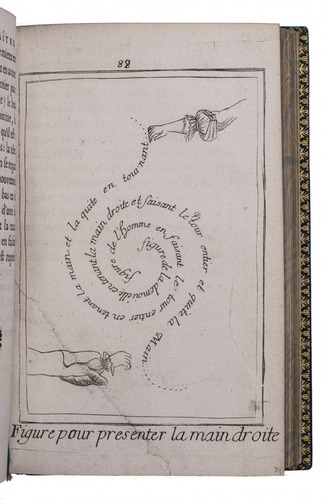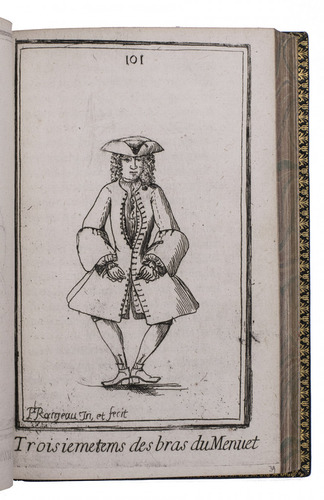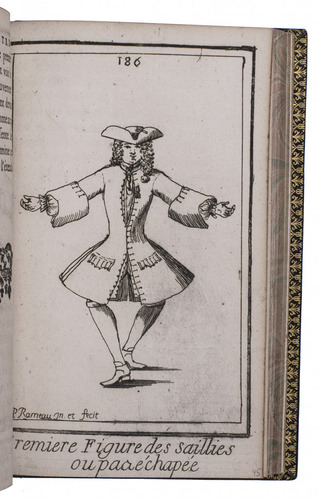RAMEAU, Pierre.
Le maître a danser. Qui enseigne la maniere de faire tous les differens pas de danse dans toute la regularité de l'art, & de conduire les bras à chaque pas.
Paris, Jean Villette, 1725. 8vo. With etched frontispiece and 59 etched plates (including 3 double-page and 1 larger folding) showing 2 couples dancing the minuet before King Louis XV and his court, individuals and couples demonstrating dance positions, dance steps, positions and movements of the hands and arms during the dance, drawn and mostly etched by the author. Further with numerous charming woodcut headpieces and tailpieces (2 signed "V.LS" or "V.LS in"), woodcut decorated initials, and decorations built up from cast fleurons. Green morocco (ca. 1900?), gold-tooled spine, gold-tooled turn-ins, fillets on board edges, curl-marbled endpapers, gilt edges (stamp on endleaf: "Gloss. Elldt Jnr"?). XXIV, 272 pp.
€ 21,500
First edition of one of the best and most influential dancing manuals of all time, by the famous French dancing master Pierre Rameau (1674-1748). It was reissued with new title-pages in 1734 and 1748 and translated into English in 1728 by the dancing master John Essex (ca. 1680-1744) under the title The dancing master: or, The art of dancing explained. Rameau, a leading dancing master in his day, is now best known for his present manual, one of the most important primary sources for of French Baroque dance and for the study and reconstruction of eighteenth-century dance technique in general. "One of the most important books in the history of dance literature" with "the clearest and most detailed descriptions ... of the structure and execution of the basic steps used in social and theatrical dance" (O'Brian Malkin quoting Fletcher and Hilton).
Part one carefully describes and illustrates the appropriate manner of walking, foot positions, bows and a large vocabulary of dance steps, and for the first time clearly sets down the five basic positions of the feet. Part two covers the use of arms while dancing. The manual is also important for the study of the invention and introduction of a dance notation system in the early 18th century, one of the most fascinating aspects in the development of French Baroque dance. Rameau describes how to dance the Minuet: slow and pompous, a resplendently dressed assemblage would step and point with grace and style. It is to be performed with a staccato repetition of eight notes, for pointing of toes and for delicate movements. The dance was deemed the "queen of dances" by the French court, illustrated in this manual by a large folding plate showing it performed by two couples at an official reception at the Court.
With a bookseller's ticket of Günther Leisten in Cologne. The frontispiece is bound in facing p. 1. With small tears in 3 plates (2 repaired), the caption or number to an occasional plate slightly shaved and an occasional spot, marginal water stain or marginal restoration, but still generally in very good condition. The binding shows very minor cracks or wear at the head and foot of the hinges, but is otherwise fine. An essential and beautifully informative masterpiece for any study of the history of dance. Cohen, Guide, col. 852 (noting only 48 plates); Lipperheide 3070 (incomplete); Magriel, Bibl. of dancing, p. 131; O'Brian Malkin, Dancing by the book 103; Reynaud 443; Sander 1651.
Related Subjects:











